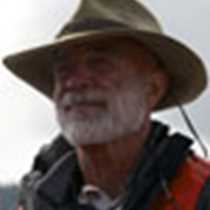Williams Cove and Tracey Arm
This morning was so beautiful that our expedition leader couldn’t wait until the normal 7:00 AM wake up call time and encouraged us to be up and out on deck at 6:40. By 7:00 we were crossing over the terminal moraine, the bar that stands across the entrance to Tracy Arm where we spent our first day of exploration. Inside the bar there were a lot of icebergs that speckled the calm morning water along with a host of seabirds—common murres, pigeon guillemots, white-winged and surf scoters, marbled murrelets, herring and glaucous-winged gulls and even bald eagles. And that was before our first official activities of the day!
We spent the morning in a spectacular area in the lower Tracy Arm complex, called Williams Cove. This serene and protected area provided us with a perfect place for an introduction to the incredible diversity and beauty of the coastal rain forest ecosystem. There were long, medium and short walks among the intertidal creatures, along the beach and into the layers of the back beach, alder thickets, skunk cabbage bogs and into the forest primeval. We followed bear trails marked by bear scat and explored the complex and diverse plant and animal life under the canopy of 100-year-old trees. Returning to the landing beach, some of us took to the water in kayaks and others went on Zodiac tours to explore the marine world as well.
During lunch the National Geographic Sea Lion weighed anchor and headed out of Williams Cove and into the dramatic fjord known as Tracy Arm. Tracy Arm is named after Benjamin Franklin Tracy, the Secretary of the Navy under President Harrison (1889-1893) and was favored by John Muir even over Glacier Bay. As we made our way up the fjord, the mountains on each side became higher and the icebergs thicker until we came to where it divides into two valleys. Here we got into our Zodiacs and cruised among the ice and the harbor seals as we made our way close to the active glacier face. There were many young harbor seal pups on the ice so we kept a respectful distance but were close enough to see them well. A birth was even observed by one group. The 200-foot face of this tidewater glacier had spewed out an enormous amount of ice into the fjord and was moderately active while we sat watching in our tiny Zodiacs. The hugeness of this wilderness area is overwhelming yet comforting and hopeful, knowing that it is being protected and saved for future generations to enjoy as we have today.




